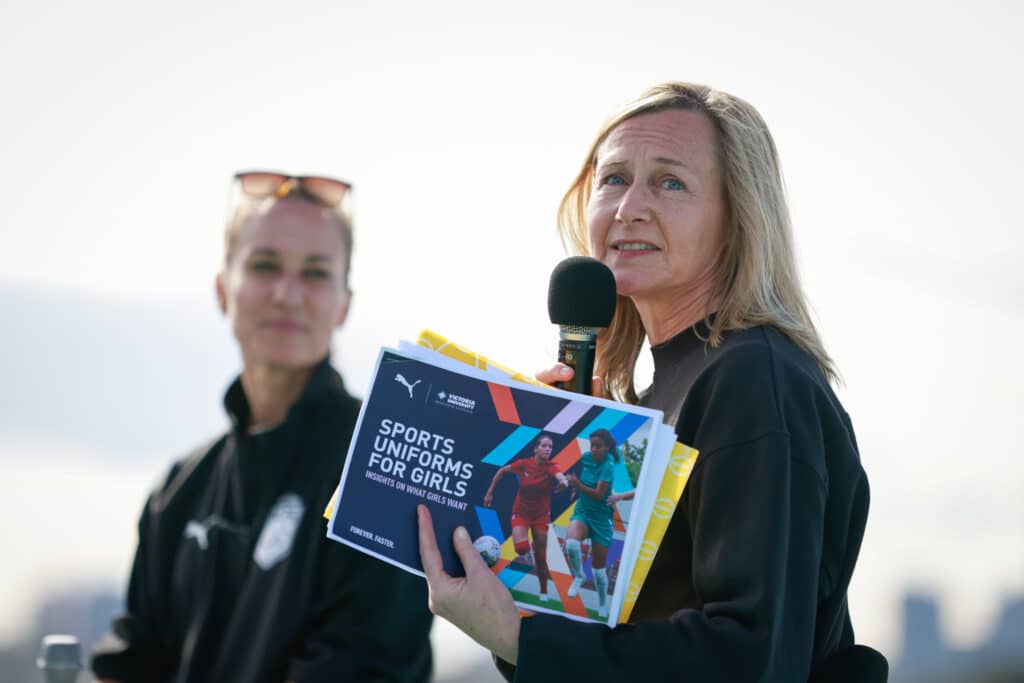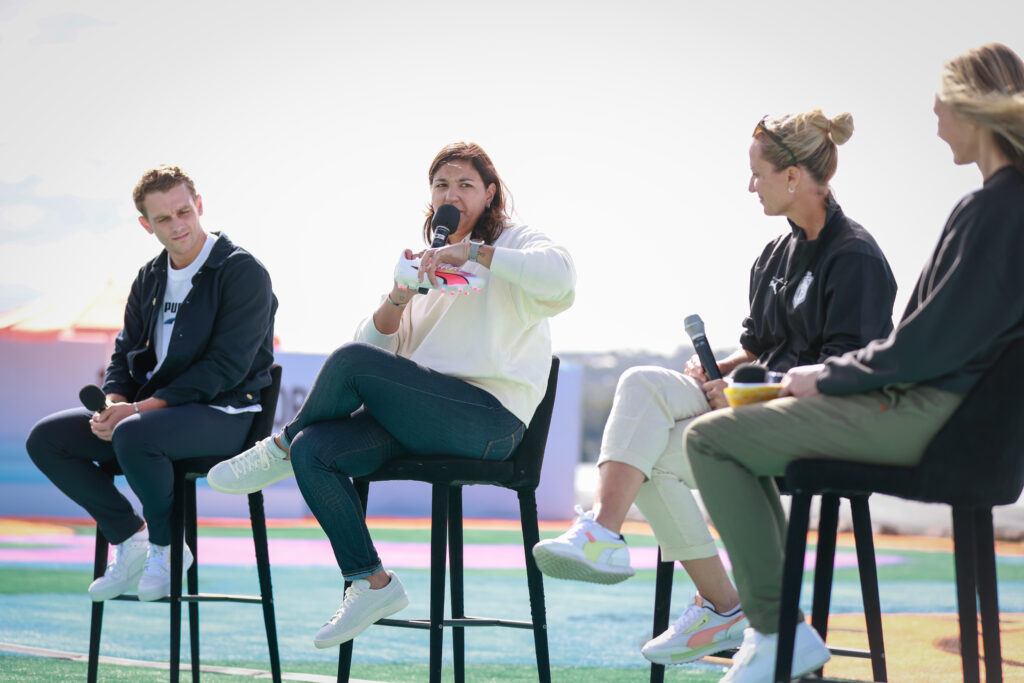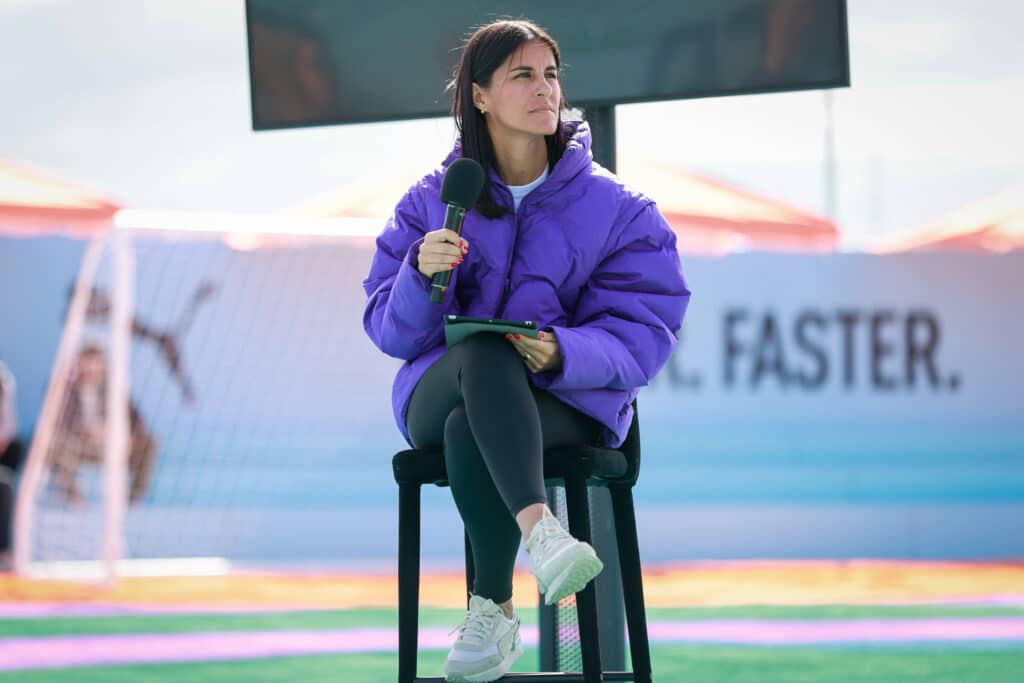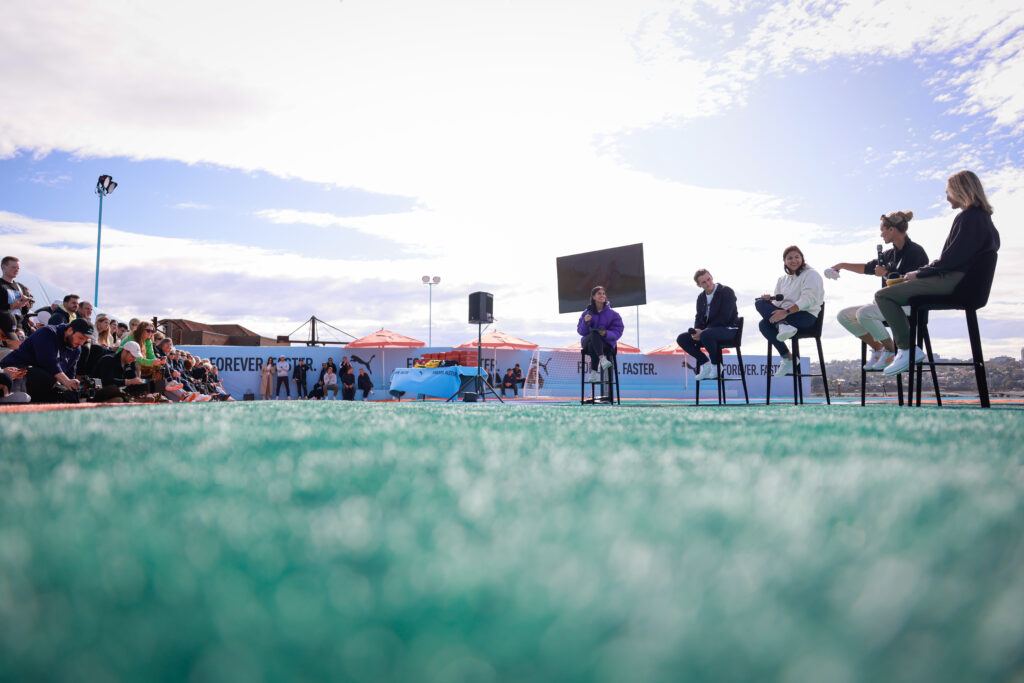What role should sportswear brands have in developing women’s sport? An active one in not only inspiring women and girls to play, but also in helping to prevent injuries and ensure the products they offer ultimately aid confidence. We look at recent research and innovation from PUMA in line with the FIFA Women’s World Cup.
Women’s health, safety, comfort and performance have long been overlooked and sidelined in product design, with research and testing focused on the male form.
And the same is true in footy boots and sports uniforms, which are often developed to fit male players or otherwise with a greater emphasis on women fitting a certain look and bodyshape, than on comfort and confidence.
Sidelining the needs of women may well be contributing to injuries and sport, and could be turning girls and women off participating in the first place.
Indeed, research shows female football players are between two and ten times more likely to suffer an ACL injury than their male counterparts, according to data by Yale Medicine that first started being recorded in the 1990s. A number of exceptional players are currently sidelined from the FIFA Women’s World Cup due to ACLs, including Beth Mead, who won the Golden Boot at the Euro 2022, as well as her teammate Leah Williamson. Other big names out of the Cup due to ACLs include Catarina Macario, and Canada’s Janine Beckie. Australia has also seen several star players sitting out over the past year due to the devastating injury.
Overall, at least 25 of the best female football players in the world are missing the 2023 FIFA Women’s World Cup, due to ACL injuries.

Meanwhile, research also shows a connection between girls and women continuing to play sports, and just how comfortable they feel in sports uniforms, according to the Institute of Health and Sport at Victoria University.
So what can be done to work towards injury prevention in female athletes and to enable more confidence and comfort for girls and women of all levels when training and competing?
Sports brands can play a significant role, not only in elevating great talent through the athletes they sponsor but also by investing in research and product development to better support and protect women and girls.
PUMA is one such brand demonstrating the active role major apparel brands can and should engage with to get more women and girls playing sport – and support comfort, injury prevention, and safety in the process. And they have just unveiled plans to do much more.

PUMA has been investing in researching and collecting data on the role of sports uniforms – thanks to a partnership with Victoria University – aiming to identify the aspects that make girls feel comfortable, confident and ready to play sport.
Meanwhile, PUMA became the first brand to offer football boots with a women-specific fit across all three of its collections in 2021, which has since been adopted by more than 95 per cent of PUMA-sponsored professional female players.
Surveying 3221 girls across eight countries, including Australia, 84 per cent of them were “active,” meaning they participated in at least one sport and/or physical activity. They found that almost half (43 per cent) of the active girls believed their uniforms made them feel conscious about their appearance – with 16 per cent saying their uniforms restricted movement while playing sport or being physically active.
As for ‘inactive girls’, the survey found that 25 per cent would participate in sport or physical activity if they could wear their preferred sports uniform.
In line with the opening days of the FIFA Women’s World Cup, PUMA announced a further comment to player health and safety, announcing an investment into a research study to explore ACL injuries in women’s football players. The outcomes will support the brand to develop further women-specific football groups which look at the unique risk factors behind ACL injuries in women’s football.

Sharing the announcement during a panel session at Cockatoo Island in Sydney, in front of a specially designed PUMA pitch to support the brand’s initiatives during the World Cup, PUMA’s Chief Product Officer Maria Valdes said the research will go beyond the pitch. “We’re aiming to understand the risks, develop training programs, and enhance our women’s fit football boots. We’re dedicated to nurturing athletes, driving innovation, and ensuring player health and safety.”
The brand will invest in health and safety research to determine more about what’s behind the greater risk of ACLs in female athletes while also aiming to pioneer innovative women-centric product design.
From the panel, former New Zealand team captain Rebecca ‘Bex’ Smith commended the move, highlighting the number of athletes missing from the World Cup due to ACLs and how devastating an injury can be for a player’s career.
She spoke about the need to open a link between female-specific research into such injuries in women, and supporting athletes in preventative and proactive measures for preventing them.
“When you think about all the research that’s been done into football, it’s been done by men, for men, for male players – the concept of thinking the research by women, for women! It shouldn’t be creative, but it actually is.
“There is research out there, but there is that link between the research and to get it to the right people. To implement into the clubs, to get players to do the prehab training, and to help prevent the injury in the first place. That’s the missing link.”
Harry Raddick, a Man City Women’s FC physiotherapist, also highlighted the need for more research, especially as the game grows internationally, and the intensity and speed even further increases.
“We know that relatively speaking there is a high risk in women’s football – there are considerations around the female athlete, which may have implications,” he said, noting hormonal fluctuations and that biomechanically, there are greater risks for women for injuries below the knee.

Indeed, PUMA’s senior product line manager for women’s football boots, Stephanie Vieria, told the panel that the women’s fit that PUMA launched in 2021 came from the rapid increase in women’s football and requests from athletes to ensure they had the right offerings. She noted three clear differences for female athletes based on several published studies.
“As a team we came together and said, do we have the right offering for female footballers out there? We went through the research that was published out there around the differences between male and female feet to see if there were relevant differences there – and indeed, we found they were.
As for getting girls playing football in the first place? There are further opportunities there also
Professor Clare Hanlon, the lead researcher examining the link between uniforms and participation from Victoria University, noted the role of sportswear and uniforms in encouraging and sustaining participation for girls and women.
“We know that when you buy something you don’t feel comfortable in, it goes to the back of your closet. But we are expecting girls who don’t feel comfortable in a uniform to turn up every week wearing it.”
A significant comfort issue concerns white clothing, particularly white shorts and pants. Several teams have moved away from white shorts in recent years, including the full AFLW competition in late 2022. However, this may not have trickled down to club level. Meanwhile, further opportunities exist to support additional period products to support girls’ confidence. Modibodi has developed several products along these lines, initially starting with leak-proof undies, to swimwear and other items. Modibodi also recently partnered with PUMA on specific product lines featuring period support. According to research by Modibodi and PUMA, three in five girls are skipping sport while on their period, over concerns about leaking and being uncomfortable in their outdated uniforms.
“Body dissatisfaction is common in adolescent girls. There is the fear of judgement, and concerns about feeling self conscious about their appearance. Sports uniforms have a big role to play in order to encourage girls to continue playing sport,” Hanlon said.
“73 per cent of active girls believe that if they wore they preferred uniform, it would increase their confidence and comfort
“But 25 per cent of inactive girls agreed that if they could wear their preferred uniform, they would start sport. That’s the influence sports uniforms have,” she said.
This new announcement on further research comes as PUMA has made several other commitments accelerating the women’s game, in line with the FIFA Women’s World Cup, centering around an immersive experience on Cockatoo Island in Sydney Harbour, including a purpose-built pitch.
They have brought the original Australian and New Zealand women’s teams – the first to represent their countries in 1975, at the Asian Cup – together for a rematch and a series of recognition initiatives in Sydney, while also selecting 23 athletes for the PUMA Accelerator program, flying them to Sydney to participate in a series of education and learning events.

What do girls want from sports uniforms? From the research, girls were identified as having different preferences but several key themes, preferring uniforms that:
- Allow them to focus on their performance
- Have breathable fabric that hides sweat and fits them well
- T-shirts for upper body clothing
- Generally tighter fit
- Sports bras that are the same colour as their tops
- Options for a second layer of upper and lower body clothing
See the full Research Report here.
Women’s Agenda has partnered with PUMA for the 2022 and 2023 editions of the PUMA Accelerator programs.

